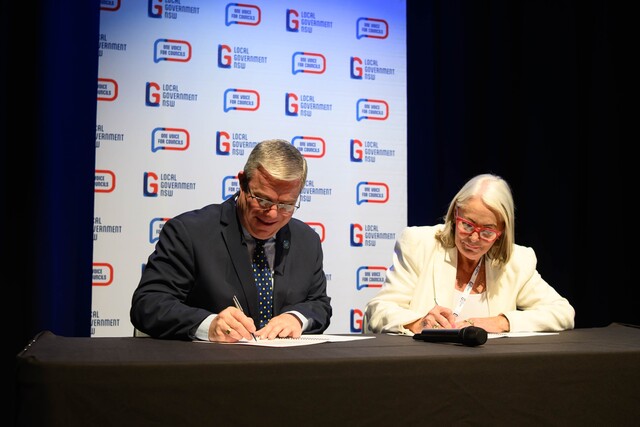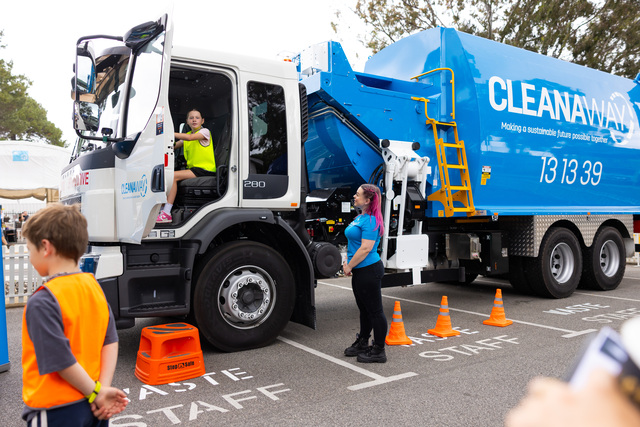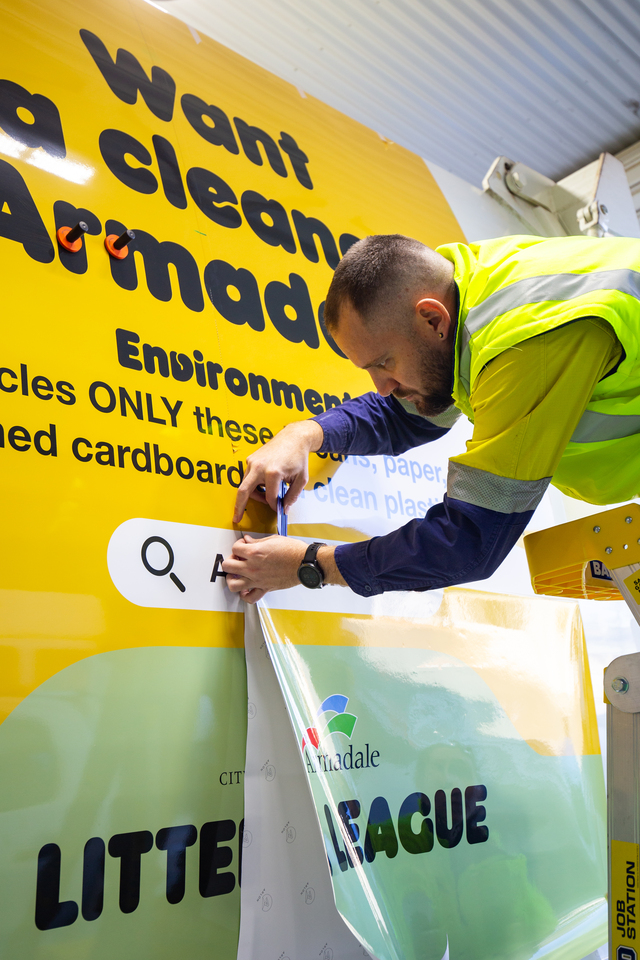While across Lake Burley Griffin the debate on Native Title was charting a rocky course, ALGA delegates at the National Convention Centre got down to the business of coming to grips with the reality of Native Title and how to make it work for a better and just society for all Australians. This was a key issue at the Assembly and surfaced in a number of forums beginning with the welcome from Wally Bell of the Ngunawal People and culminating in a resolution recognising the validity of Native Title.
President of the Local Government Association of Northern Territory, Margaret Vigants chaired the Native Title Seminar. Delegates were addressed by Ed Wensing, ALGA Native Title Project Manager; Tony McRae, Director of Research and Information with the National Native Title Tribunal; and Hayden Wright, CEO Redland Shire, which was party to the historic Redland/Quandamooka agreement.
Ed Wensing gave delegates a synopsis of the various means that Councils have available to them to assist with understanding Native Title. ALGA’s Native Title Information Project assists Councils to respond to claims, including conducting seminars and workshops, as well as the production of information kits.
Tony McRae gave a brief outline of the history of common law, property law and Mabo judgement, and covered the role of the National Native Title Tribunal. He pointed out that the Tribunal, while not a court, was available to mediate agreements. He said there are three choices where a dispute over land arises – to legislate, litigate or work out an agreement.
Legislation, he suggested, is liable to be overridden by antidiscrimination provisions in the law, while litigation, is disturbingly expensive, noting the Western Australian Government is currently running a $10 million legal bill over this issue.
Therefore, the Tribunal advocates agreements as the most effective means of providing an ongoing and evolving relationship. Using the Redland/Quandamooka agreement, Hayden Wright demonstrated how smoothly a Native Title Agreement can be achieved if there is sufficient goodwill and reason on all sides.
“Through the Tribunal, we were encouraged to find the middle ground,” he said. “Once we looked at the principles presented by the Quandamooka Land Council we saw we could accept them.
“What did the Quandamooka Land Council want? They wanted a sustainable future, they wanted to preserve the land, they wanted work and education for their children. Just like everyone else.
“A point of strong common interest was both Councils shared high environmental values. From that time we moved forward.”
Hayden Wright said that both parties are highly committed to the agreement. He said lessons to be learnt were that it was important to develop respect for each other, acknowledge indigenous ownership and recognise that the parties have different views of land ownership.
During the Assembly, a resolution recognising the validity of Native Title was carried, along with a statement of Local Government regret for the past injustice of policies that removed Aboriginal children from their families. On the final day of the Assembly, Gatjil Djerrkura and Lois O’Donoghue, Chair and former Chair of ATSIC, were presented with copies of these two resolutions. Lois O’Donoghue thanked delegates for their sincere discussion. She said that a tide of change is sweeping the nation that seeks reconciliation, which political leaders ignore at their peril.
“Australia must find solutions to find a proper place for Aboriginal and Torres Strait Islander people in the affairs of the nation,” she said. “I thank you for your deliberation.”







